
So happy to be in Nepal. Leaving behind the frenetic London mindset, I’m instantly immersed in the timeless atmosphere of invisible wisdom, total unpredictability, gentle kindness, and chaotic clash as ancient, modern, Buddhist, Hindu, and Western cultures stretch to coexist.
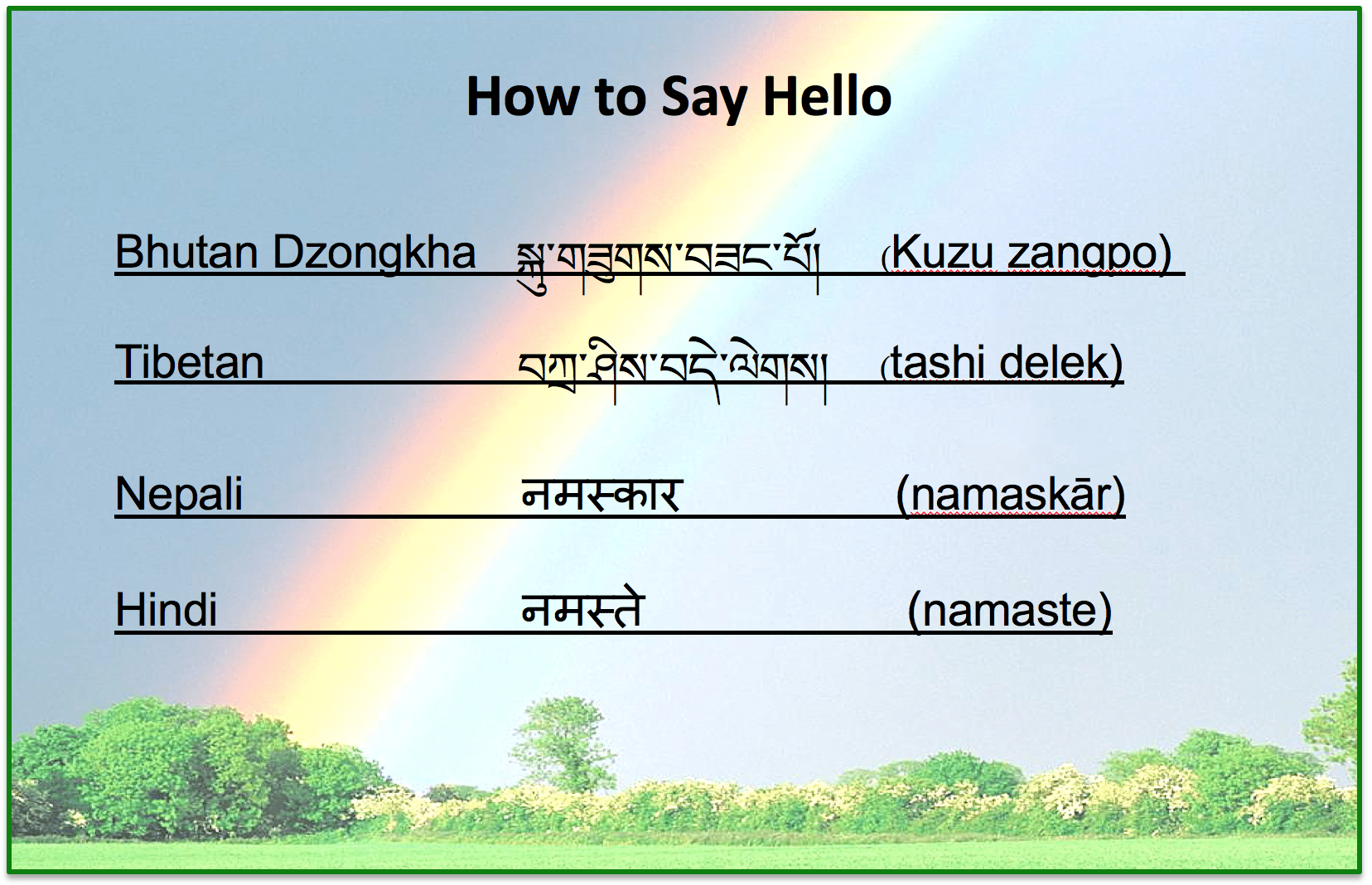
“Hello” is a pretty good way to start a conversation. Nepal is a crossroads of many cultures. There are 123 different languages spoken as a mother tongue, with Nepali being the official language. Like Hindi and Sanskrit, Nepali is of the Indo-Aryan language family using the Devangari script. Tibetan and Dzongkha are of the Sino or Chinese language family, and use the Uchen script. Walking around Kathmandu with my Lama, we’re most likely to be greeted in Nepali, Tibetan, Hindi, or Dzonkha. Fortunately he’s fluent in all of these plus English. Speaking any of these languages is quite challenging for me. And reading signs even harder – Ha Ha! I need to focus on something simple. So today I learned how to count to ten in Dzongkha, the language of Bhutan – Chi, Nyi, Sum, Zhi, Nga, Dru, Du-in, Gye, Gu, Chu tham. Yay!
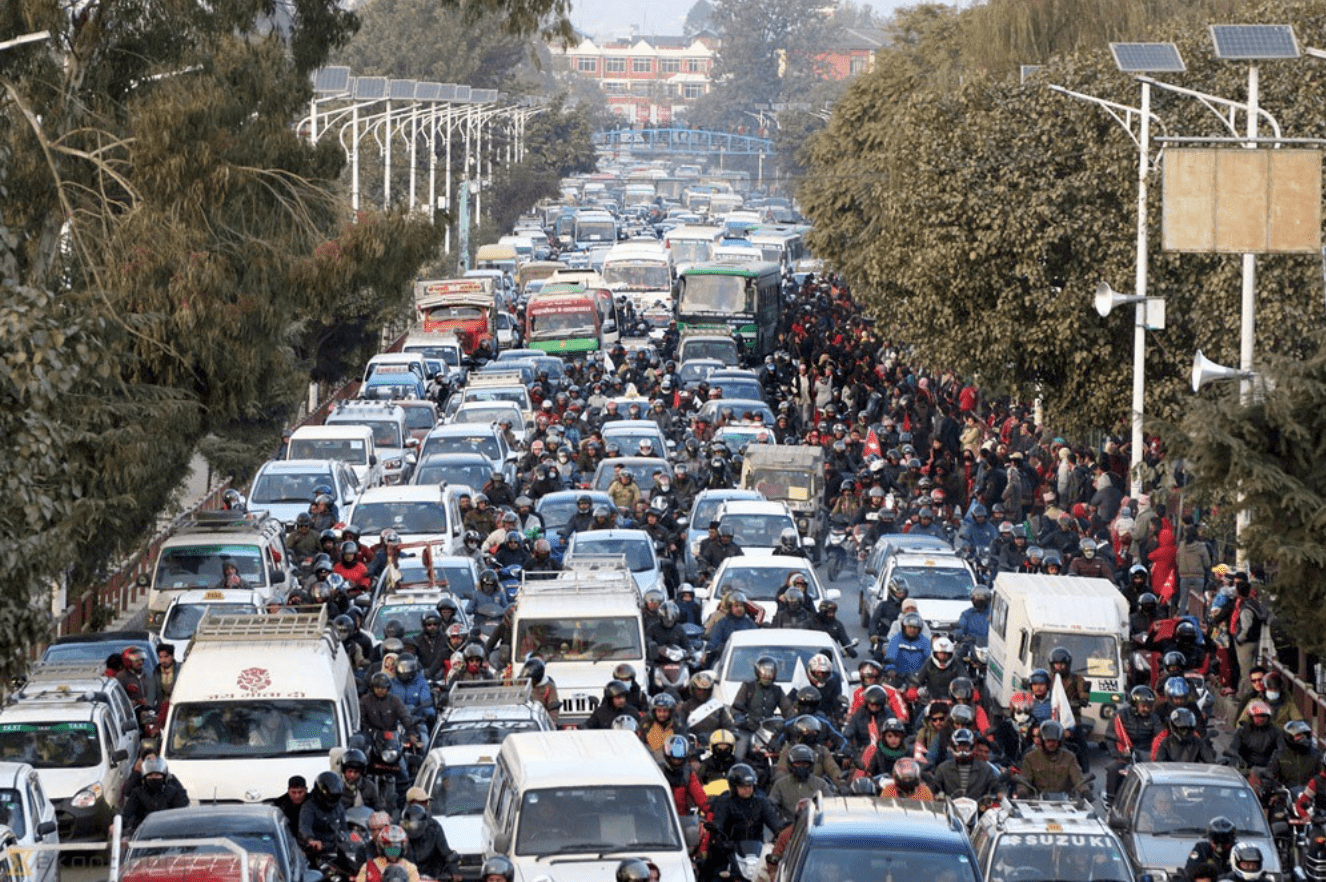
From Kathmandu airport to the hotel, we met utter confusion in traffic, This was a stark contrast to the speed and technical efficiency of London traffic systems. Kathmandu has grown very fast to 1 million people, with very little infrastructure. Very few traffic lights or street signs, and hardly any planning. Thousands of vehicles of all sizes crowd into imaginary lanes. Caught in this everyday snarl, a trip to the hotel that might normally take 10 minutes, took us 2 hours.
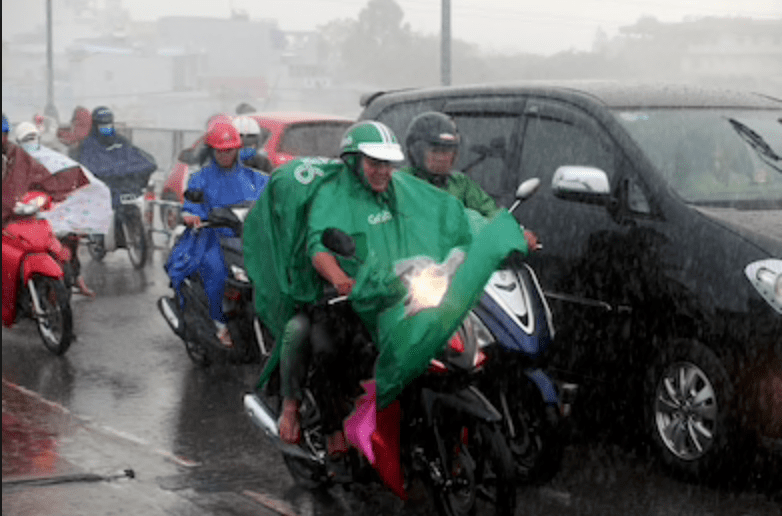
It starts to rain, as usual during the monsoon season. Thousands of motorcycle riders defend themselves in the downpour. I was captivated by their clever raincoat solutions. The peaceful acceptance and calm attitude of every single person in the daily mayhem, is also in stark contrast to our Western reactions. In the US, people would be enraged with a kind of deprived expectation, feeling somehow entitled to being “on time”. However today in Kathmandu there’s utter calm and cheerfulness. Could it be a testimony to the refinement of the Asian mind?
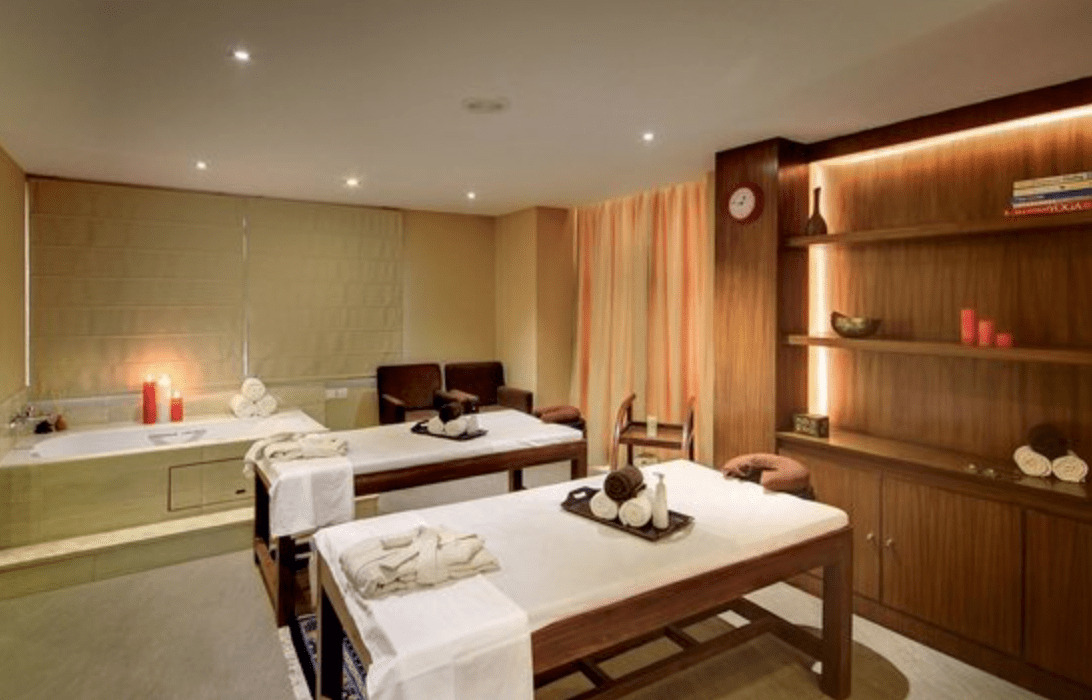
My wonderful Lama offered an energizing deep-tissue massage at the Shambhala Spa on the “way to the hotel”. Filled with gratitude, I’m starting to feel my feet on the ground.
But a surprise awaits us on the streets leading to the hotel. Oh dear, the only two streets to the hotel are blocked by sewer construction. My friend Diki, the owner of the hotel, is quite distressed. She guides us by phone and comes out to help our driver through the mud piles. We finally made it through a narrow pass. Both streets will be blocked 2-3 more weeks, causing major difficulty for her hotel guests. I took a look the next day to make this video for you.
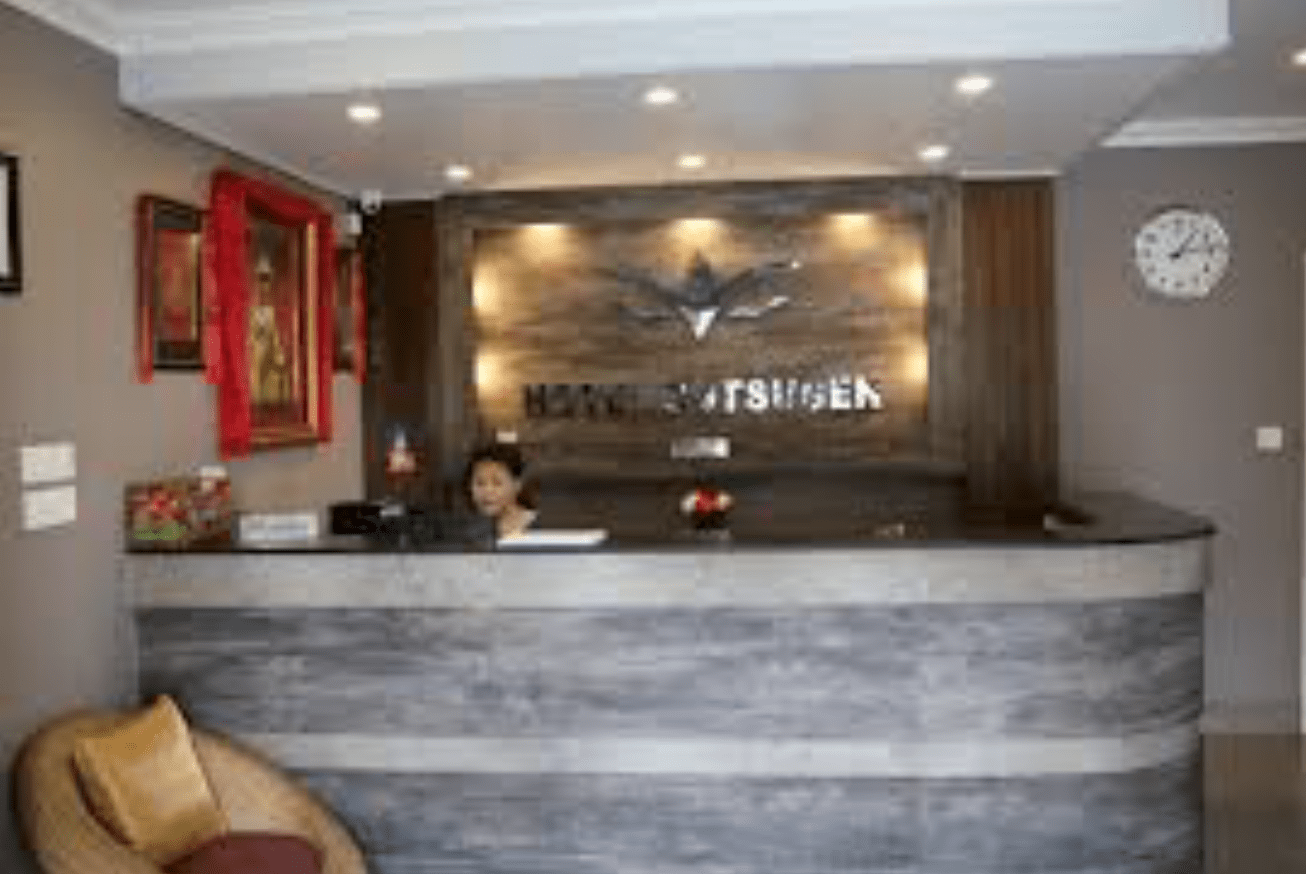
I’m staying at the Butsugen hotel, where I was last year. It is close to the Boudi Stupa. It is spotless, and economical. My friend Diki is a lovely hostess, her food is exceptionally clean, and I am comfortable.
Morning view of Kathmandu from my hotel rooftop. I can practice Qigong here if it’s not raining.
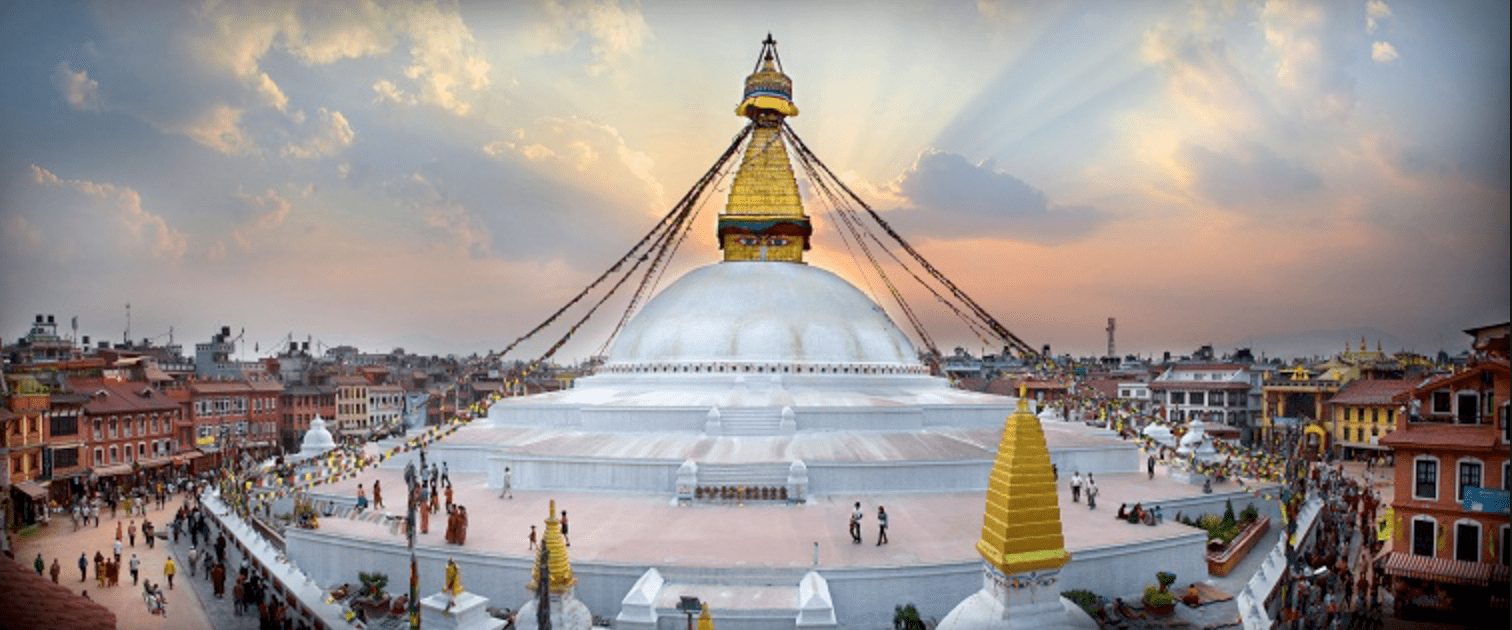
The Bouda Stupa in Kathmandu is the most sacred Buddhist shrine outside of Tibet. It is believed to have been built between the 4th and 6th centuries BCE, just before the arrival of Sakyamuni Buddha, and to entomb the remains of Kassapa Buddha.
Who built the Boudha? Legend says that a poor widow named Jhyazima was inspired to make a great offering to the Buddha. With her hard-earned savings as a chicken keeper, she approached the king for permission to build it. The king granted permission to her on the condition that she use an area of land measuring no bigger than the size of an ox skin. So Jhyazima cut the ox skin into thin strings and laid them end to end, encircling a huge parcel of land. She claimed the area inside the ox skin strings and began building the world’s largest stupa of the time! This caused an uproar of jealousy and outrage from the rich and powerful people of the day, who petitioned the king to stop construction. But the king declared that “once permission has been granted it cannot be rescinded”. And so the enormous Bouda Stupa was constructed. Although the old woman passed away before its completion, her four sons finished it. The Bouda stands 141 feet high, 100 feet in diameter and encompasses 6,756 square meters. It was badly damanged in the earthquake of 2015, and is now completely restored.
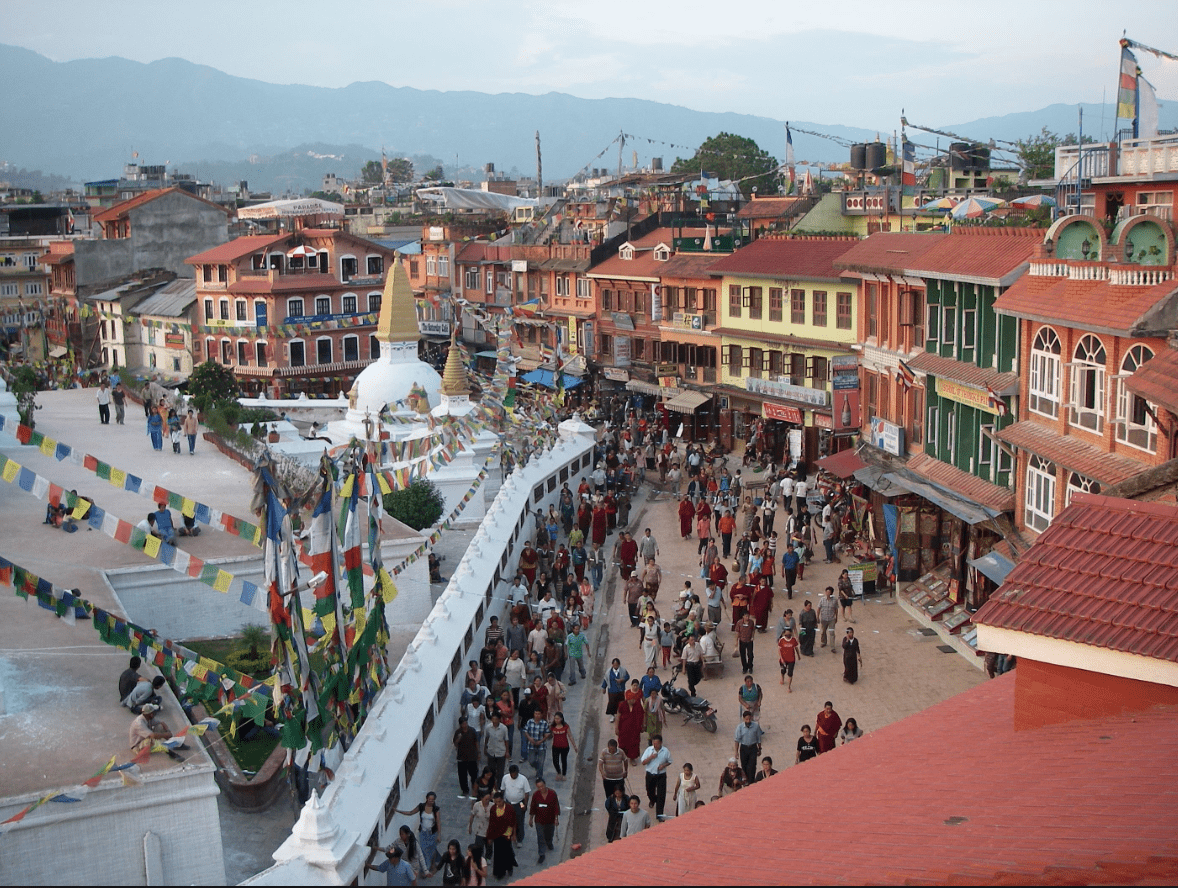
I try to walk around the Bouda at least 3 times a day – for the simple reason that it makes me happy – something like watching a beautiful sunrise. It is customary to circumnavigate a Buddhist shrine in a clockwise direction, turning the many prayer wheels. Tradition holds that for any person who circumambulates it, the great Bouda will become a “wish granting jewel”. Whoever hears and mentions of it to others will have placed the seed of enlightenment upon their mndstream. And more benefits accumulate on and on. The Bouda Stupa is encircled by shops and monasteries, and is visited by millions of people every year.
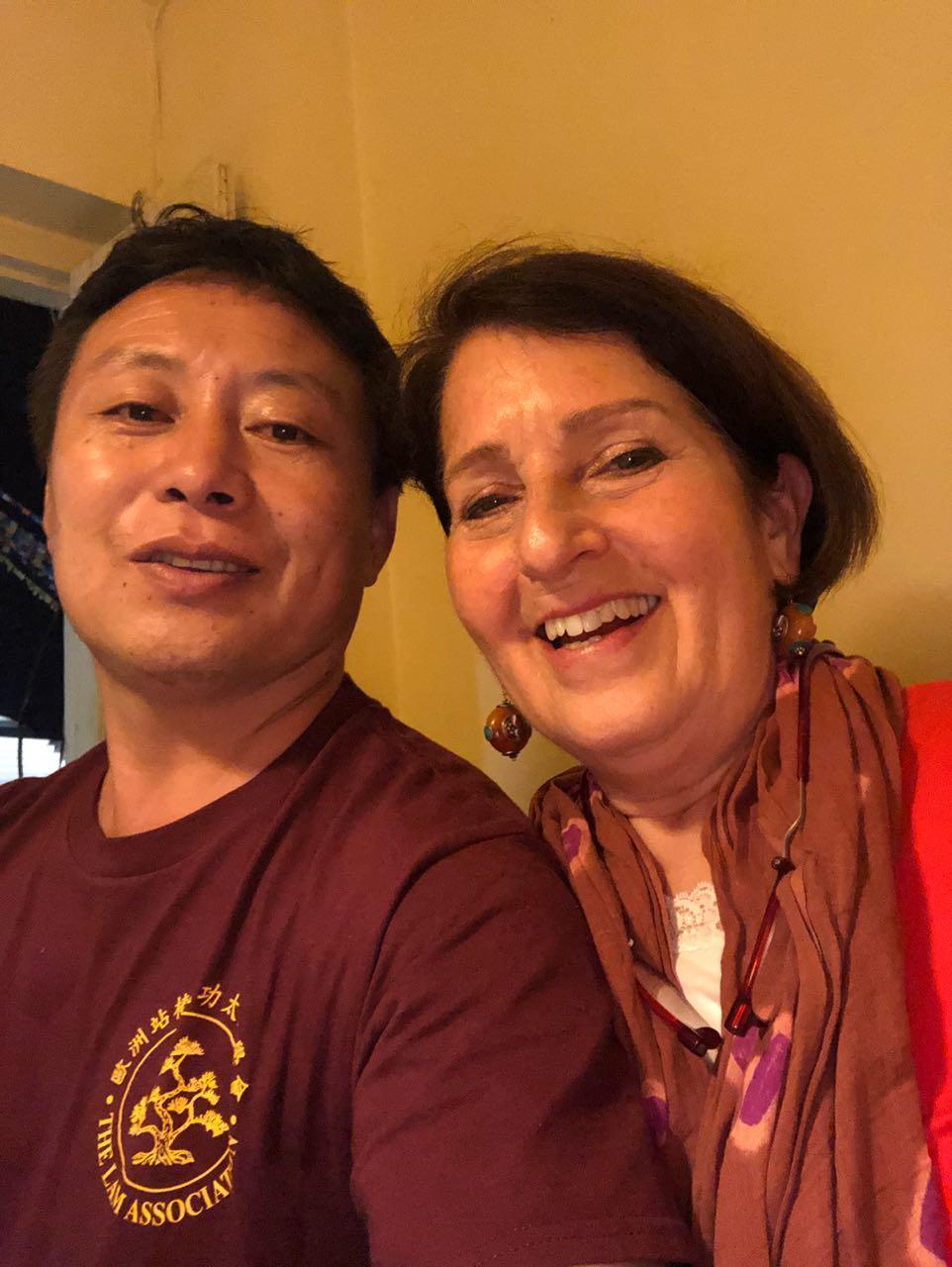
We walk around the Boudha and stop for Vietnamese dinner. Damchey is wearing the t-shirt I bought for him from Master Lam in London. Looks pretty good, doesn’t it?
This is our view of the Boudha from the restaurant table.
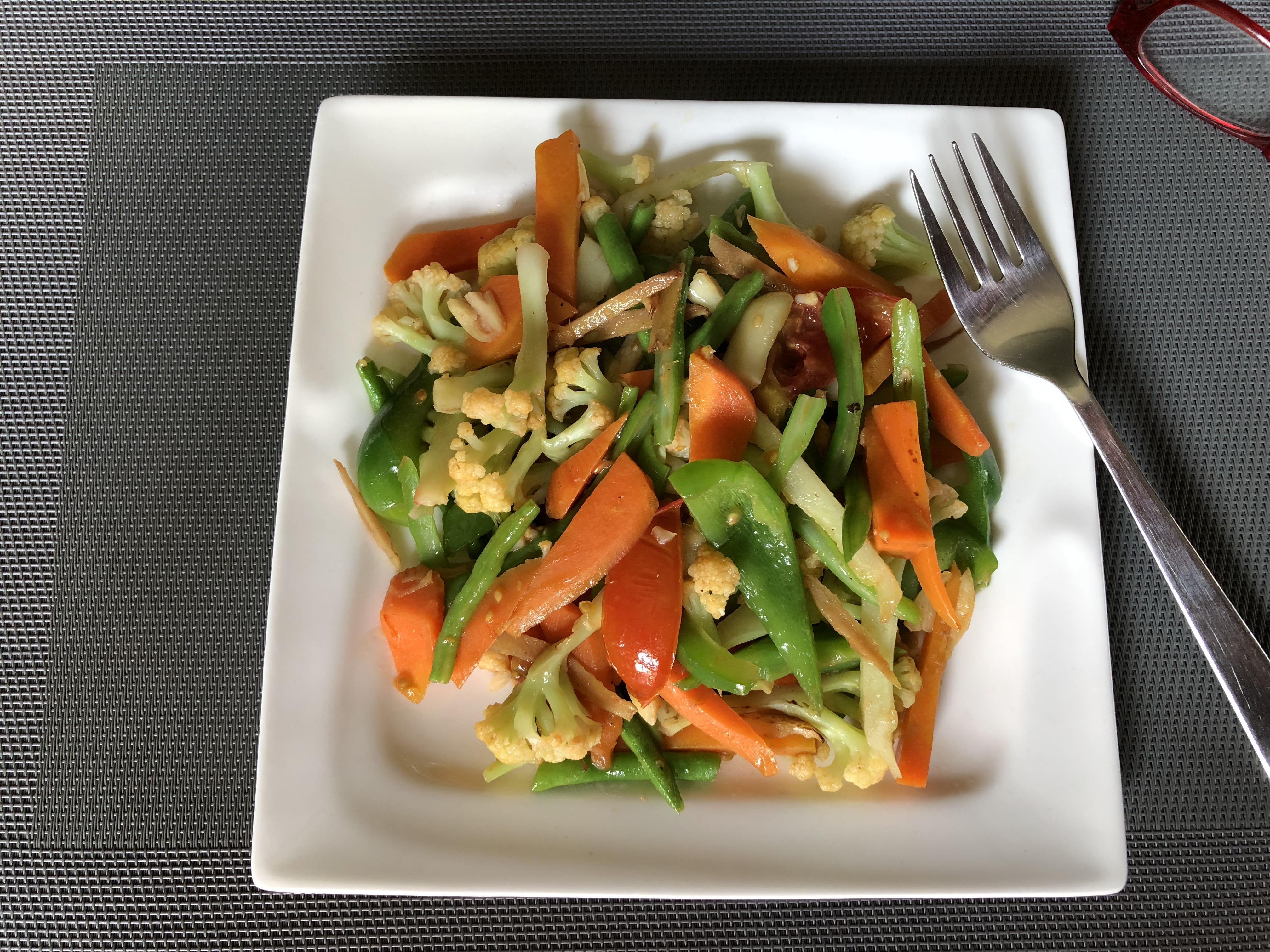
My lunch the next day was off the menu. I asked: Can you do plain veggies stir-fried in garlic and ginger? Yes! They always ask: Don’t you want any bread, rice, potatoes, or chapati? I say: No thanks, just pure vegetables! And Wow! They were delicious!
A downpour at the Boudha today during a puja ceremony.

The best momos I’ve ever tasted took an hour to arrive. That’s because they’re made up fresh every time! Wow again! It was worth the wait! They were unbelievably delicious, and so was the vegetable soup.

Two lovely Tibetan ladies were sitting on the steps in an antique carved doorway near the Bouda. My Lama spoke to them in Tibetan and asked if they’d agree to a photo. These are a couple of clear-eyed, savvy grandmothers who escaped Tibet in 1959. They wear traditional Tibetan dress, and sport comfortable Adidas and Skechers knock-offs.

The Himalayan Java Coffee Shop is THE #1 place to see and be seen around the Boudha, with organic designer coffees and sublime carrot cake. (OK, I had turmeric chai and one bite of cake).
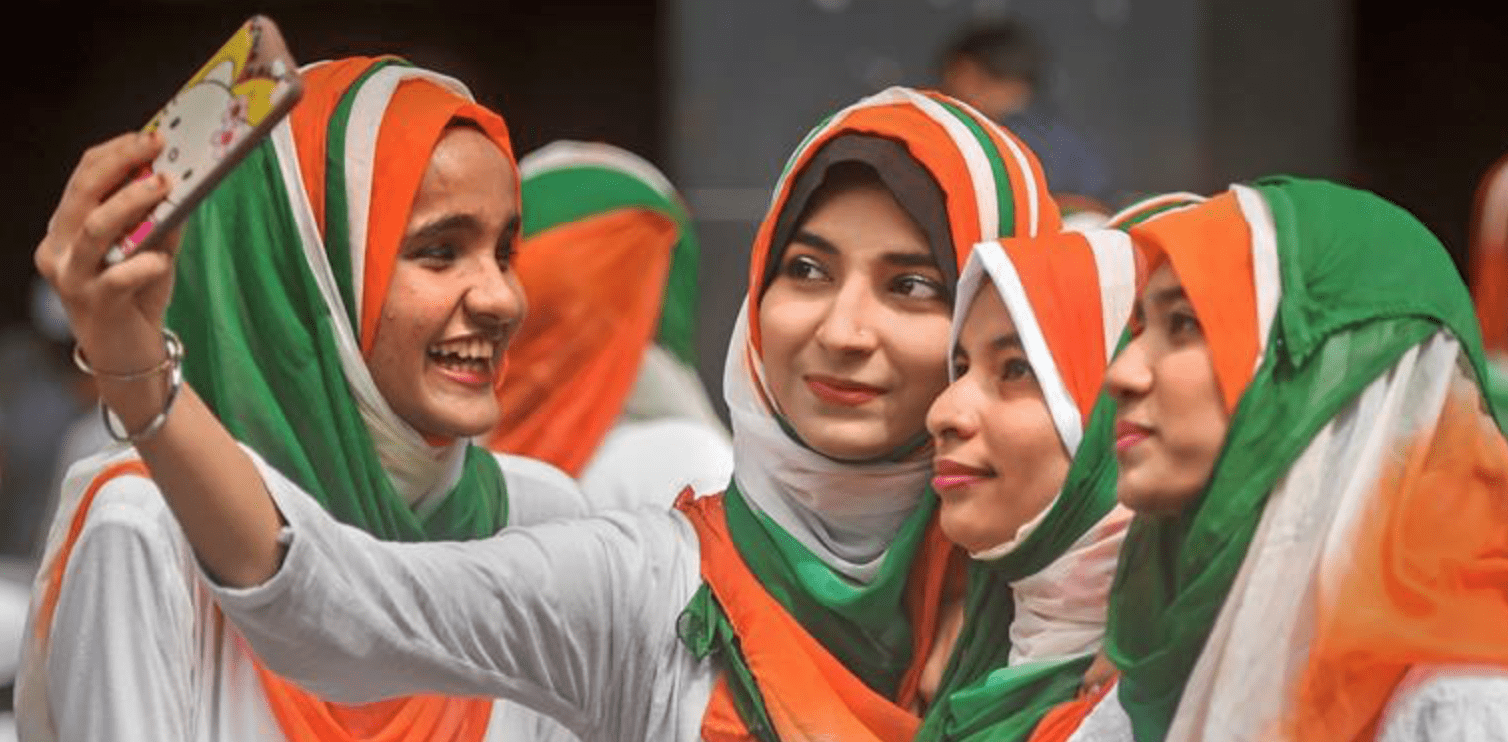
Today parties all over Kathmandu are celebrating neighboring India’s 72nd anniversary of independence. Indians dressed up in flag colors for parades and selfies.
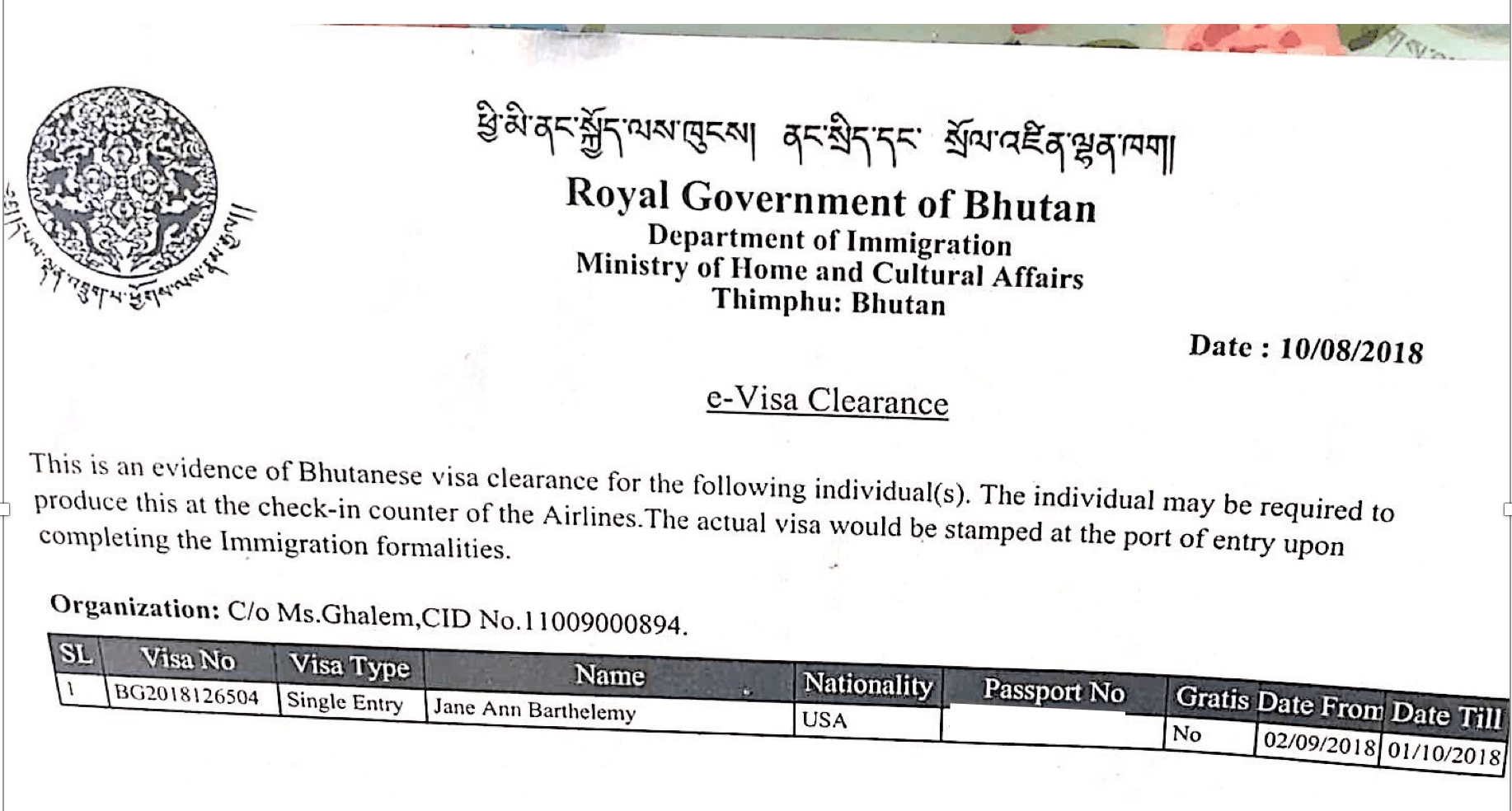
The final confirmation of my Bhutan Visa. Yay! This is a testimony to the hard work of my Lama and his family. I’ll be allowed to stay in Bhutan for 30 days as their personal guest, without paying the required $250 per day fees. In order to board the plane to Paro, Bhutan September 2, I have to show this document.
Thanks for tuning in to my travel log! Next week I’m staying in an apartment in Kathmandu with friends where I get to try food shopping, paying in Nepalese rupees, cooking, and sharing meals. Whoa! Stay tuned for continuing adventures!


